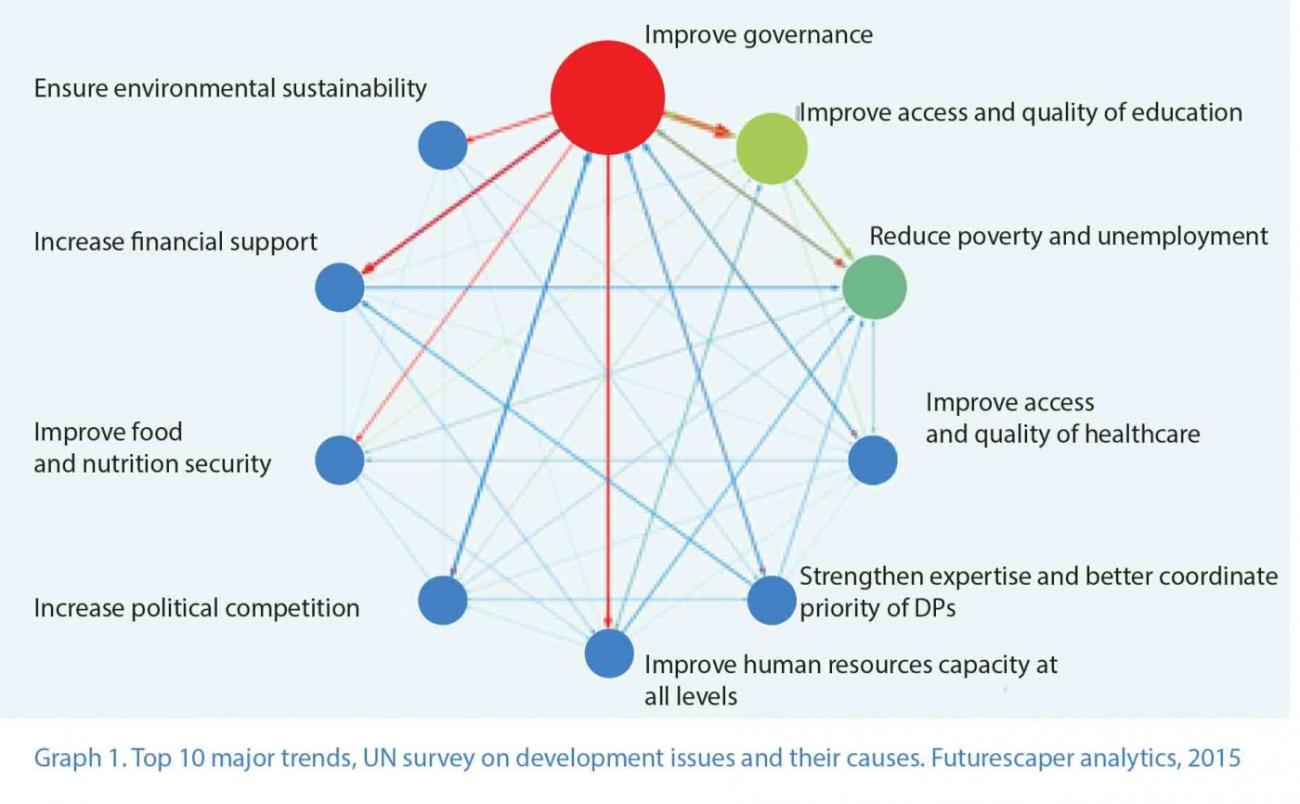The wisdom of crowds: Asking the citizens in Lao PDR

Enough money, enough food, enough jobs, safety, and justice: The new global development agenda is about dignity respect for all the world’s people. What could be better, then, than making sure those people have a meaningful voice in planning their own future? In Lao PDR, we are actively and creatively engaging citizens in analysing their own issues and crafting their own solutions.
A common vision to achieve sustainable development results
2015 was a special year for Lao PDR: the country marked a number of anniversaries, the new 8th National Socio-Economic Development Plan 2016-2020 with its overall objective of graduation from Least Developed Country status, and the MDG-SDG transition.
The UN country team took advantage of the moment to reinvigorate advocacy for increased citizens’ engagement, particularly as we have embarked on the development of a new support strategy, a.k.a. Lao PDR – UN Partnership Framework (UNPF) 2017-2021.
This strategy will not only serve as a common basis and vision for sustainable UN agency interventions, but also demonstrate the importance and power of broad participation for sustainable development results.
Our recipe for a participatory UN strategy
We are supporting the engagement of citizen experts, including civil society (non-profit associations) and other partners, in our planning. We are doing this through a combination of crowdsourcing, consultations and micro-grants, blended with awareness raising and advocacy.
First, we are complementing the country analysis – an important basis for the UNPF development – with a “wisdom of crowds” approach, i.e. crowdsourcing through three mini-surveys based on the Futurescaper online platform.
The surveys explored alternative perceptions of Lao PDR’s current key development issues, their causes, effects and priorities for the future of the country to 2021.
The first survey, an in-depth exploration of existing development issues and their causes, clearly showed that governance is a top priority.
The majority of respondents identified governance and corruption as root causes of development challenges. They linked corruption to issues such as environmental sustainability; poverty and unemployment; human resources capacity; food and nutrition security and access and quality of education (see graph 1). Many of these factors have been cross-referenced in terms of causality; for example, reducing poverty and unemployment is strongly inter-linked with improving governance and vice versa.
Identifying the most vulnerable populations
What are other ways to get on board views beyond those of the “usual suspects” within UN and Government? To date, we have rarely cooperated with non-profit associations. So we decided to pursue this and engaged local non-profit associations via micro-grants.
The associations support research on five vulnerable groups: women and children in remote areas (including ethnic minorities); unskilled, unemployed youth (age 15-24); people with physical and mental disability, especially in remote areas; farmers without access to land; and urban poor and socially marginalized.
The studies help identify why these groups have been left behind, looking into immediate and root causes as well as manifestations of vulnerability to ensure better targeting of UN support in Lao PDR and find solutions for these vulnerable groups. Three of the studies are almost complete and the remaining two will be ready soon.
Consulting the civil society
The studies were complemented through dedicated civil society consultations, with 70 non-profit associations from all over the country, which in addition to the discussion of the UNPF also focused on the contribution of civil society to the 8th National Socio-Economic Development Plan 2016-2020.
Furthermore, the consultations helped to define clear steps towards enhancing the space for the civil society operation in the country and improve collaboration with UN. Consultations between Government, civil society and private sector on SDG localization t00k place at the end of 2015 and additional sensitization workshops are plannedfor 2016.
Engaging Lao youth
Lao youth make up 60 percent of the population. We attracted over 80 Lao youth who shared their vision of Lao PDR by 2030 via a mobile-phone photo competition ‘#Namkan2030’ and a related social media campaign.
As we continue working on some of the above-mentioned initiatives to promote participatory strategic planning, the success of 2015 is apparent. Engaging citizens is challenging but absolutely necessary. We have seen that it can be both enlightening and fun.













